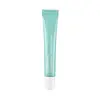What's inside
What's inside
 Key Ingredients
Key Ingredients

 Benefits
Benefits

 Concerns
Concerns

 Ingredients Side-by-side
Ingredients Side-by-side

Water
Skin ConditioningGlycerin
HumectantBrassica Campestris Sterols
EmollientCholesterol
EmollientPhytosteryl/Behenyl/Octyldodecyl Lauroyl Glutamate
Skin ConditioningMicrocrystalline Cellulose
Absorbent1,2-Hexanediol
Skin ConditioningPolyglyceryl-10 Oleate
Skin ConditioningSodium Hyaluronate
HumectantHydrogenated Lecithin
EmulsifyingPolyglutamic Acid
Skin ConditioningCeramide NP
Skin ConditioningRetinal
Skin ConditioningCapryloyl Salicylic Acid
ExfoliatingStearic Acid
CleansingOleic Acid
EmollientTocopherol
AntioxidantDisodium EDTA
Water, Glycerin, Brassica Campestris Sterols, Cholesterol, Phytosteryl/Behenyl/Octyldodecyl Lauroyl Glutamate, Microcrystalline Cellulose, 1,2-Hexanediol, Polyglyceryl-10 Oleate, Sodium Hyaluronate, Hydrogenated Lecithin, Polyglutamic Acid, Ceramide NP, Retinal, Capryloyl Salicylic Acid, Stearic Acid, Oleic Acid, Tocopherol, Disodium EDTA
Water
Skin ConditioningButylene Glycol
HumectantGlycerin
HumectantNiacinamide
SmoothingC13-15 Alkane
SolventSqualane
EmollientPyrus Malus Fruit Extract
Skin ConditioningPropanediol
SolventSodium Polyacrylate
AbsorbentDimethyl Isosorbide
SolventRetinal
Skin ConditioningCaprylyl Glyceryl Ether
CleansingDiethylhexyl Syringylidenemalonate
Skin ProtectingOryza Sativa Bran Extract
Skin ConditioningCaprylhydroxamic Acid
Citric Acid
BufferingHelianthus Annuus Extract
EmollientCaprylic/Capric Triglyceride
MaskingRosmarinus Officinalis Leaf Extract
AntimicrobialTocopherol
AntioxidantWater, Butylene Glycol, Glycerin, Niacinamide, C13-15 Alkane, Squalane, Pyrus Malus Fruit Extract, Propanediol, Sodium Polyacrylate, Dimethyl Isosorbide, Retinal, Caprylyl Glyceryl Ether, Diethylhexyl Syringylidenemalonate, Oryza Sativa Bran Extract, Caprylhydroxamic Acid, Citric Acid, Helianthus Annuus Extract, Caprylic/Capric Triglyceride, Rosmarinus Officinalis Leaf Extract, Tocopherol
 Reviews
Reviews

Ingredients Explained
These ingredients are found in both products.
Ingredients higher up in an ingredient list are typically present in a larger amount.
Glycerin is already naturally found in your skin. It helps moisturize and protect your skin.
A study from 2016 found glycerin to be more effective as a humectant than AHAs and hyaluronic acid.
As a humectant, it helps the skin stay hydrated by pulling moisture to your skin. The low molecular weight of glycerin allows it to pull moisture into the deeper layers of your skin.
Hydrated skin improves your skin barrier; Your skin barrier helps protect against irritants and bacteria.
Glycerin has also been found to have antimicrobial and antiviral properties. Due to these properties, glycerin is often used in wound and burn treatments.
In cosmetics, glycerin is usually derived from plants such as soybean or palm. However, it can also be sourced from animals, such as tallow or animal fat.
This ingredient is organic, colorless, odorless, and non-toxic.
Glycerin is the name for this ingredient in American English. British English uses Glycerol/Glycerine.
Learn more about GlycerinRetinal is a form of retinoid. Retinoids are the gold-standard class of anti-aging ingredients.
Retinal has many benefits as other retinoids: improve skin texture, reduce large pores, reduce the effects of aging, reduce the visibility of dark spots, heal scars, and fight acne.
Studies show retinal may work at a faster rate than retinol due to its structure.
All retinoids have to be converted into retinoic acid before starting to work. Some retinoids take several steps of conversion before binding. Retinal is only one step away, making it more potent.
Like other retinoids, retinal may be irritating. It is best to ease into using this ingredient frequently.
Using the 'ramp up' method, start by using retinol once a week. This gives your skin time to adjust and decrease irritation. Once you feel ready, you can slowly increase the frequency of retinol use.
Using retinoids will increase sun-sensitivity in the first few weeks of use. Though studies show retinoids increase your skin's natural SPF with continuous use, it is best to always wear sunscreen and sun-protection.
Learn more about RetinalTocopherol (also known as Vitamin E) is a common antioxidant used to help protect the skin from free-radicals and strengthen the skin barrier. It's also fat soluble - this means our skin is great at absorbing it.
Vitamin E also helps keep your natural skin lipids healthy. Your lipid skin barrier naturally consists of lipids, ceramides, and fatty acids. Vitamin E offers extra protection for your skin’s lipid barrier, keeping your skin healthy and nourished.
Another benefit is a bit of UV protection. Vitamin E helps reduce the damage caused by UVB rays. (It should not replace your sunscreen). Combining it with Vitamin C can decrease sunburned cells and hyperpigmentation after UV exposure.
You might have noticed Vitamin E + C often paired together. This is because it is great at stabilizing Vitamin C. Using the two together helps increase the effectiveness of both ingredients.
There are often claims that Vitamin E can reduce/prevent scarring, but these claims haven't been confirmed by scientific research.
Learn more about TocopherolWater. It's the most common cosmetic ingredient of all. You'll usually see it at the top of ingredient lists, meaning that it makes up the largest part of the product.
So why is it so popular? Water most often acts as a solvent - this means that it helps dissolve other ingredients into the formulation.
You'll also recognize water as that liquid we all need to stay alive. If you see this, drink a glass of water. Stay hydrated!
Learn more about Water